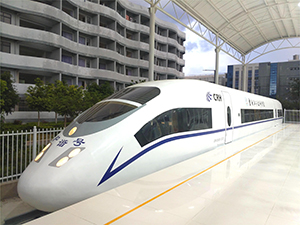The function and meaning of the high-speed rail cabin
The main functions of the high-speed rail compartment:
Possessed functions: The shape of the high-speed rail cabin simulates the part above the floor of the EMU EC01 head car, and integrates the cockpit, first-class passenger area, door area, second-class passenger area, dining area, multi-functional crew room, voice broadcast room and other parts.
The following training functions can be realized:
1. Familiar with the various layouts and structures inside the train;
2. Familiar with train doors, cab doors, and fire partition doors;
3. Familiar with the first and second passenger areas of the EMU;
4. Familiar with train luggage racks and large luggage storage racks;
5. Familiar with the bullet train service bar area;
6. Familiar with the trainer's instructor's office;
7. Familiar with the train passenger information system (in the train);
8. Familiar with the transmission of teaching videos from the broadcast room by EMUs;
9. Familiar with the control of motor vehicle lighting system;
10. Familiar with the EMU broadcasting system;
11. Familiar with the EMU emergency system (emergency lighting, emergency escape windows and window hammers, fire extinguishers);
12. Familiar with the use of the motor car toilet;
The meaning of high-speed rail cabin:
The high-speed rail cabin meets the teaching needs of most professional core courses and practical training courses of the high-speed rail crew major. The courses offered in the training room include: ground service in the waiting room, railway safety and emergency handling, railway service etiquette, security inspection business training, and rail transit awareness training , High-speed rail car model simulation bar training, train crew training, VIP waiting room service, ticket sales training, railway customer service representative training, etc. High-speed rail cabin teaching: carry out experimental training courses for all professional rail transit directions; support vocational skills competitions; carry out social training and social services.


